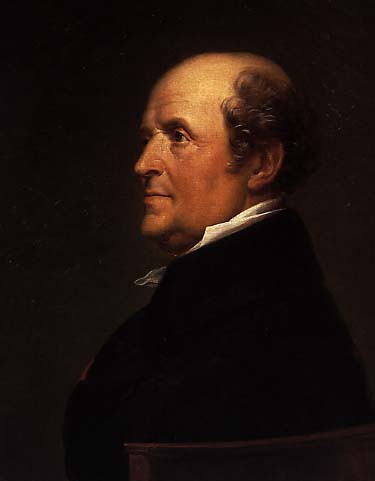The Baron Gérard Museum has been located since 1900 in the oldest wing of the bishops' residence of Bayeux. It owes its name to the large legacy donated in 1898 by Henri-Alexandre Gérard (1818-1903), great art lover, deputé for the arrondissement and nephew of the painter François Gérard.
The museum possesses an interesting collection of Neoclassical paintings: a work by the young David, “The Philosopher,” a painting by Gros shown at the Salon of 1801, “Sappho to Leucate”, a bacchant, and a portrait of Madame Lefèvre by her husband, Robert Lefèvre, an artist originally from Bayeux and a rival of Gérard as portraitist. The latter acquired his reputation during the Revolution but it was the Empire that made his fortune. He became in effect one of the official, imperial court painters by executing portraits of most of the members of the Bonaparte family and the great men and women of the period. Of note amongst the paintings by this artist held by the museum is the portrait of Doctor Dubois (illustrated above), the obstetrician of Marie-Louise at the time of the birth of the King of Rome.
There are also items relating to Mademoiselle George, a famous actress who made her début at the Théâtre Français in 1802 and became a member of the Comédie-Française in 1813. Among these is an extraordinary caricature representing her as Napoleon. She was born in Bayeux in 1787 and given the name Joséphine Marguerite Wiemer. Two pieces are of particular interest: a terracotta representing the death of General Lannes, preserved by Doctor Le Tual Dumanoir, himself from Bayeux; and a small vial containing water from the spring at Napoleon's tomb on Saint-Helena. The museum also has on show the keys of the city that were offered to Napoleon at the time of his visit on 26th May, 1811. It is important to note that it was the Emperor who ordered Vivant Denon to return Queen Mathilde's tapestry to the city of Bayeux.
As regards the Second Empire period, the museum has an important collection of drawings, gouaches, and watercolours by Septime Le Pippre (1833-1871). An artist originally from Montfort-l'Amaury, he lived in the Bayeux area, first at Ver-sur Mer and then at Villiers-le-Sec. Signing up in 1869 as captain in the 18th battalion of the 'Mobiles du Calvados', he was mortally wounded on January 2, 1871, in combat against the Prussians at the gates of Mans. Picturesque scenes of rural life, historical evocations, military subjects or illustration of middle-class life, his humourous and nostalgic works give us a synthesis of rural life under the Second Empire.
In addition to this important art collection, the Baron Gérard Museum consecrates a significant portion of the exhibition space to the porcelain and lace of Bayeux, amongst which are several pieces from the First and Second Empires.
Trans. P.H.
Baron Gérard Museum


